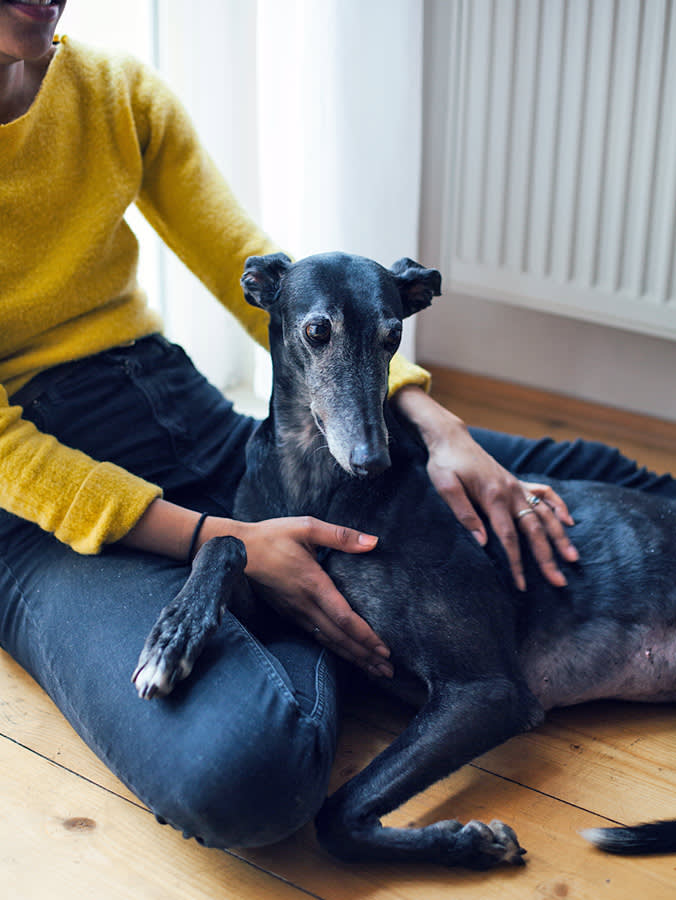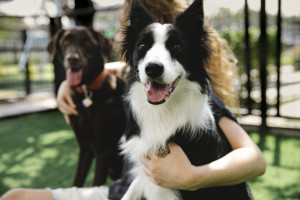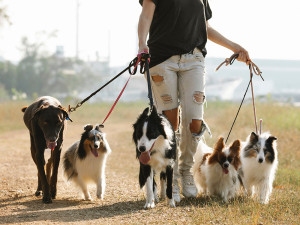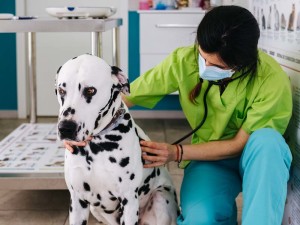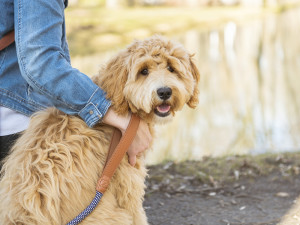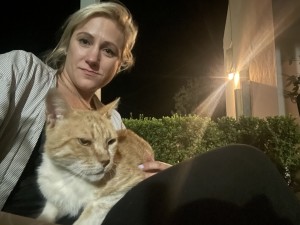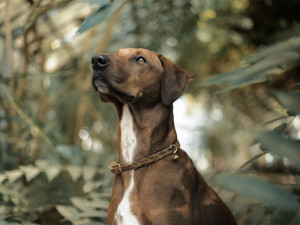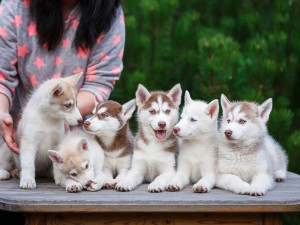Greyhounds: The History and Origins of Sighthounds
Where did the Greyhound originate? Learn more about the history and genetic origins of the sighthound group
The Greyhound is not only one of our most beloved breeds, it’s actually one of our most ancient. Greyhounds (or some form of Greyhound-like sighthound dogs) have been around for over 6,000 years, hitting the shores of the British Isles likely some 2,000 years ago. Since then, their history has been varied as humans have bred and kept them thanks to their genetic characteristics for everything from hunting to sport and companionship to dog showing. Ahead, we map out the history and genetic origins of the Greyhound.
Why was the Greyhound originally bred?
Greyhounds and other sighthound breeds were bred for hunting as far back as we know. What is a sighthound? Sighthounds are a type of hound who use their sight to hunt, rather than scent. They're dolichocephalic with long noses, have deep chests to support their large hearts and lungs and a lean body for maximum speed. Greyhounds are the most famous sighthounds but these days the group also encapsulates Whippets, Afghan Hounds, Irish Wolfhounds, Salukis and more.
According to the American Kennel Clubopens in new tab: “The hounds of the pharaohs were designed to detect, chase, capture, and dispatch the fleet-footed wildlife of Egypt’s deserts.” Evidence of a greyhound-like dogopens in new tab has also been found in artwork discovered in Iran and Turkey, while a skeleton of a Greyhound-like dog was excavated in Syria.
The Greyhound’s arrival in Europe and the British Isles followed a similar path. On the British Isles, Greyhounds were bred primarily for hunting via ‘coursing’opens in new tab – chasing and turning (or killing) an animal for either meat or ‘sport’. Sighthounds, thanks to their great speed and acute sight are able to chase a hare by sight, not scent, (hence ‘sighthounds’) making for a popular spectator ‘sport’, which drew crowds of up to 80,000 in the 19th century. The cruel practice diminished in popularity as Greyhound racing took over. Hare coursing is now banned in the UKopens in new tab.
A brief history of the Greyhound
Genetically, all domesticated dogs are descended from wolvesopens in new tab. Domestication of wolves likely occurred between 1 0,000 to 16,300opens in new tab. By 4,500 BC, according to fossil remains, five distinct types of dogs existed: mastiffs, wolf-type dogs, sighthounds (like the Greyhound or the Saluki), pointing dogs and herding dogs. Early versions of sighthounds are thought to have been bred in Egypt up to 5,000 years agoopens in new tab (yes, those dogs depicted on the walls of ancient Egyptian tombs).
Famed for their hunting prowess, these dogs eventually spread to Europe and Britain. A version of a sighthound, referred to as a ‘vertragusopens in new tab’, was noted in the Vindolanda tablets (some of the oldest surviving handwritten documents in Britain) found in a Roman fort from 85 AD, situated in modern day Northumberlandopens in new tab. The Townley Greyhoundsopens in new tab, a Roman statue found in Italy and held by the British Museum shows two Salukis and dates from 1–2nd century. A dog with similar skeletal makeup to a Greyhound was found at a Roman excavation site in Warmington, Warwickshireopens in new tab, dating back to 70AD. All of which is to say, Greyhounds, or some version thereof, have been around for a while.
In the Middle Ages, Greyhounds were seen as so prestigious across Europe that only royalty and nobilityopens in new tab were allowed to own them. They were particularly important to the Tudors and can even be found carved into the stone of King’s College Chapel, Cambridgeopens in new tab. Edmund Tudor, the father of Henry VII, owned a white greyhoundopens in new tab, given to him by his brother, Henry VI. Greyhounds were a symbol of the House of Lancaster from which Margaret, Countess of Richmond, (and who founded St. John’s and Christ’s Colleges, Cambridge) hailed. Peter Jones, the librarian, at King’s College Cambridge, explains that because Greyhounds were a Lancastrian and a Tudor emblemopens in new tab, their placement on the chapel was about establishing legitimacy or, ”a right to rule inherited from the Chapel’s founder, Henry VI, by the Tudors”.
As ‘coursing’, the form of hunting (usually of hares) that Greyhounds were bred for, grew in popularity and became a spectator sport (the first coursing club was formed in Swaffam, Norfolk in 1776), Greyhounds gained more interest amongst the masses. Interest in coursing peaked in Victorian times before being usurped by Greyhound racing, the first oval track race taking place in Belle Vue stadium in Manchester in 1926. Despite a huge popularity of Greyhound racing in the UK throughout the middle part of the century, these days only 20 stadiums remain. In 2022, Dogs Trust, Blue Cross and the RSPCA joined forces to call for an end to Greyhound racingopens in new tab saying that they’d worked for years with the industry to try and improve welfare standards, but that change hadn’t happened quickly enough. Between 2018 and 2021, 2,000 Greyhounds died or were put to sleep because of racingopens in new tab.
Genetic characteristics unique to the Greyhound
Greyhounds were one of the earliest dogsopens in new tab to be purposefully selected for their preferred traits that are still around today. Bred for hunting purposes, Greyhounds are “perfectly constructed for high-speed pursuit”, according to the American Kennel Club. In fact, most of their most famous characteristicsopens in new tab are to help facilitate this:
Long and narrow head
Greyhounds are ‘dolichocephalic’ meaning their faces are long and narrow. While this shape provides an aerodynamic function for speed, dogs with this skull shape have been found to have a slightly increased risk of osteosarcomaopens in new tab (bone cancer). They are also prone to dental issuesopens in new tab, in fact, periodontal disease is the main disorderopens in new tab recorded in Greyhounds.
Muscular build
Greyhounds are fast. It has been shown that they can often reach 17 metres per secondopens in new tab for short periods of time when they’re sprinting. To facilitate this, they are extremely muscly and have long, very muscular and powerful hindquartersopens in new tab. They also have low fat coverage, meaning their muscles are often visible.
Deep chest
Greyhounds have larger lungs and heart than other dogs – namely to help distribute the much needed oxygen which helps them achieve their fast speeds. A capacious chestopens in new tab is needed to house these organs. A Greyhound’s deep chest does make them more pre-disposed to bloatopens in new tab, which is an extremely dangerous and emergency condition where a dog’s stomach twists, trapping gasses and causing ‘bloat’. This condition needs attention from a vet ASAP.
Short and smooth coat
While this coat may make a Greyhound preferable for pet parents who don’t want a dog that sheds with an easy coat to care for, the lack of an undercoat, coupled with the low fat ratio of a Greyhound means they can be sensitive to both high and low temperatures.
The Victorian explosion: Greyhound engineering
Prior to the 19th century
Before the Greyhound was officially recorded in the stud books of the Victorian times, some form of sighthound similar to the Greyhound had been on the British Isles for close to 2,000 years. Greyhounds were bred for hunting or ‘coursing’ for nobility and were prestigious enough to represent The House of Lancaster and the Tudorsopens in new tab as a symbol. The Greyhound eventually became popular in sport as ‘coursing’ for entertainment purposes took off amongst the working classes.
Breeding for function
As a sighthound, the Greyhound is suited for hunting via sightopens in new tab rather than scent. They are able to see up to half a mile in front of them and can reach speeds of up to 45mph. This means they are ideal for a kind of hunting called ‘coursing’, which involves chasing the animal down. This English pastime was first described by Greek historian Arrian in 180AD to his fellow Greeks in his document On Coursingopens in new tab.
The first rules for coursing as a competitive sport were laid out during Queen Elizabeth I’s reign by the Duke of Norfolkopens in new tab. The first coursing club was established in Norfolk in 1776. The National Coursing Clubopens in new tab formed in 1858 and later moved to East Sussex. The biggest annual event was The Waterloo Cup, held in Altcar, Liverpool. The last oneopens in new tab was held in 2005 before it was banned, along with fox hunting. According to the RSPCAopens in new tab hare coursing is extremely cruel. “Being chased is extremely stressful for the hare and if caught it will die.”
As the popularity for coursing declined, the popularity for Greyhound racing grew. The first Greyhound racing was recorded in the UK in Hendon in 1876. The Greyhound Racing Association was formed in the UK in 1925, leading to the first Greyhound racing on an oval track in Britain in 1926opens in new tab. There were 40 tracks operating across the country by the end of 1927. According to the Greyhound Clubopens in new tab, “Dogs have been selectively breed for short bursts of speed since then and are noticeably different to both the show and coursing bred greyhounds.”
Although much less popular now, Greyhound racing is considered cruel. According to the RSPCAopens in new tab: “Once a sport deeply ingrained in British culture, greyhound racing’s popularity is thankfully declining. This is a positive reflection of a modern and conscientious society, one where the risk of suffering in the name of fun isn’t tolerated... Worse still, greyhound racing leads to thousands of dog deaths and painful injuries.”
Breeding for class
All modern pedigree Greyhoundsopens in new tab are descendants of dogs originally registered and recorded in 1882 in The Greyhound Stud Bookopens in new tab which were later registered with the coursing, racing and Kennel Club authorities of the UK. After 1882 the breed was ‘closed’.
Replicating ancient breeds
All domesticated dogs are descended from wolves, and one of the oldest domesticated breeds is the Greyhound. According to LiveScienceopens in new tab: Perhaps the first fully distinct breed was the Saluki, also called the Arabian greyhound, whose name translates to “noble”.
Breeds with a similar history to the Greyhound
Saluki
Salukis share their long history with the Greyhound as early versions of the sighthound and have been found on artwork across the Middle East and Egypt up to 6,000 years ago. However, Salukis remained popular in the Middle East and spread east to China along the Silk Road and didn’t come to the British Isles until much later. The first successful breeding line of Salukis in Great Britain was started by Florence Amhurst, daughter of the 1st Baron Amherst of Hackney in 1895, after she saw them during a tour of the Nile.
English Foxhound
Though relatively ‘new’ (at least by Greyhound standards!) these scent hounds have been bred specifically for hunting (along with their cousins the American Foxhound) for over 200 years. English Foxhounds were also dispatched for coursing duty. During the time that India was under British rule, they were shipped over for jackal coursing. English Foxhounds were preferred to Greyhounds as their lesser speed made for a longer, crueller chase.
Italian Greyhound
This pint-sized Greyhound is having a moment right now, and for good reason (have you seen how adorable?). As sighthounds, they share their ancient lineage with Greyhounds and Salukis and nobles and kings across Italy and France are reported to have kept them. Originally bred to hunting purposes, these dogs eventually became more popular as companion pets. Unlike Greyhounds, the Kennel Club classifies the Italian Greyhound in the toy group.
